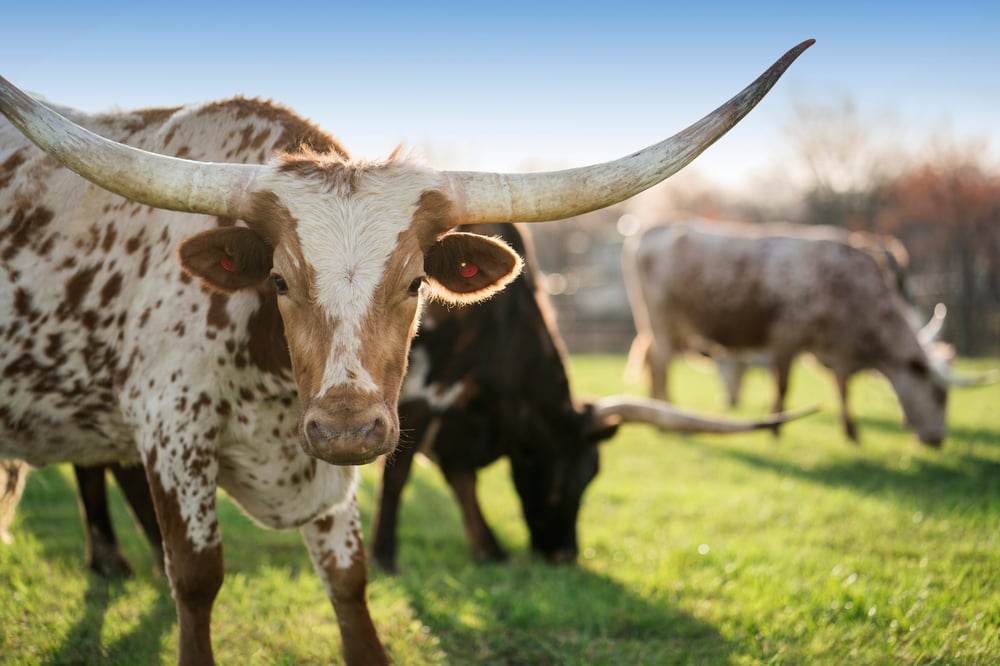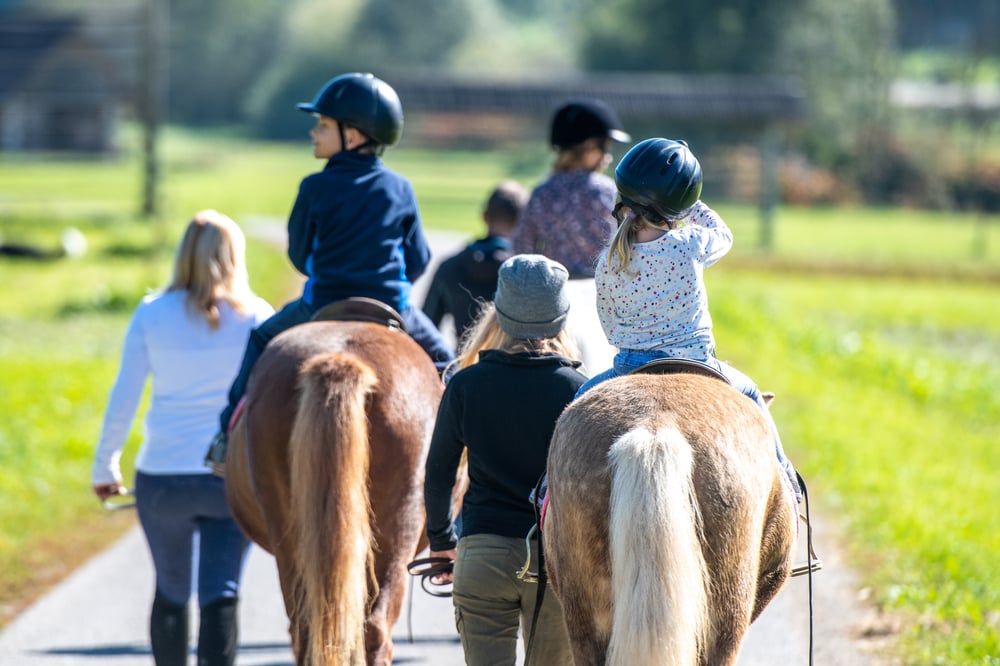From The American Quarter Horse Journal and AQHA Corporate Partner SmartPak
Because your horse was designed to spend his days roaming outside, he is naturally equipped with tools to keep himself warm when the temperatures start cooling down. However, that might not always be enough in this modern age of horse ownership.
In this article, we examine:
How your horse stays warm in cold weather
How do you know if my horse is warm enough?
Fit Guide for horse blankets
Washing turnout rugs and blankets
Short-hair secrets for horse showing in winter
How Your Horse Stays Warm in Cold Weather
In response to the fading sunlight, your horse’s body starts producing his winter coat as soon as the days start getting shorter. He begins to grow his longer, thicker winter coat in July, shedding the shorter, thinner summer coat in October. That winter coat has longer and coarser hairs than his summer coat, and he uses them to keep himself warm by fluffing them up to trap heat. The individual hairs stand up rather than lying flat against the skin, which traps warm air close to his body and insulates him from the cold.
Along with using this thick hair coat to stay warm from the outside, your horse also uses calories to keep himself warm from the inside. His body ferments roughage in the hindgut, which creates heat that helps maintain his core temperature, which is why many horse owners feed more hay in the winter.
However, even your horse’s full winter coat and normal calorie intake may not be enough to keep him warm all winter, depending on his body’s lower critical temperature or LCT. Your horse’s lower critical temperature is the lowest temperature at which he can maintain his core body temperature without using additional energy. Once the temperature outside gets below that lower critical temperature, his hair coat and normal calorie intake alone aren’t enough to keep him warm.
The lower critical temperature of an individual horse will depend on the temperatures that he’s accustomed to, the amount of body insulation he has (such as the length of his hair coat and the amount of body fat), and whether he lives inside or outside. That’s why even horses with a full winter coat can sometimes benefit from a blanket!
How do I know if my horse is warm enough?
Sheet or blanket? Stable or turnout? If your horse is going to be outside, you’ll want to put on a turnout, whereas you can choose a stable if he’s only going to be in the barn. Depending on the temperature, you’ll choose a sheet if it’s warmer outside and a blanket if it’s colder, but just like Goldilocks, your horse wants his blanket to be just right. Deciding how much to bundle your horse up can be tough
Just like it does for us humans, 40 degrees will feel different to a Florida horse in October than it will to a horse in Chicago in February, so you’ll need to dress your horse differently depending on the temperatures he’s used to.
In addition, the temperature outside isn’t the only factor to consider when you’re choosing the right blanket for the weather. Other factors, like your horse’s living environment and whether or not he’s clipped should also be taken into account.
SmartBlanketing Tips
You can check out SmartPak’s handy infographic for all things blankets and visit SmartPak’s Ultimate Blanket Destination for everything you need to know about blankets.
Fit Guide for Horse Blankets
The blanket should be snug around the neck, with the spine of the blanket ending at the top of the tail.
Surcingles should be adjusted so that you can barely get your hand sideways (about 4 inches) between the horse and the surcingle. Adjust leg straps the same way. You want them loose enough so the horse can walk and move comfortably, but not so loose that he could get a hoof caught.
Crossing the leg straps at the center (between the horse's back legs) helps reduce the chance of a hoof getting caught. Always snap to the same side of the blanket as the strap originates.
To measure for a new blanket, start at the center of his chest, along his side, ending in the middle of his tail. If the measurement you get is an odd number, 77 for example, round it up to the next number.
Washing Turnout Rugs and Blankets
Take your turnout rugs/blankets and stable rugs/blankets to a professional rug/blanket cleaning service that has the specialty equipment needed.
Hand-washing will, however, help to prolong the life of your rug/blanket.
Follow these simple steps:
Remove excess dirt.
Hand-wash at a cool temperature using a non-biological soap (washing in hot water can damage the waterproof nature of the fabric).
Drip dry. Do not tumble dry.
Always store in a cool, dry place.
Short-Hair Secrets for Horse Showing in Winter
Long hair works well for horses that are turned out through the winter or undergo low-impact riding. But for horses that train and compete, long hair can make a horse more apt to sweat – then chill. For that matter, short hair is what most trainers and owners desire for their equine athletes during winter.
AQHA Professional Horsewoman Gigi Bailey of De Pere, Wisconsin, shares her program for keeping horse hair coats short during cold weather.
1. Start With a Warm Barn
An insulated barn keeps horses warmer in the winter and cooler in the summer. Gigi’s show barn was constructed with this in mind. The building’s walls have a 14 R-factor; the ceiling has a 20 R-factor (R-factor refers to the energy efficiency rating of a structure.) She keeps the thermostat at about 64 degrees in the winter, and ceiling fans constantly circulate warm air throughout the barn.
“At 64 degrees in the wintertime in the barn, the horses typically wear a sheet and a heavy blanket, and they wear a light hood or a slinky at night.”
2. Hauling Horses in Blankets
“Feel the day,” Gigi suggests, when discussing whether or not to haul horses with blankets. “Before we take a trip, we stand around and take a poll. ‘Should we haul in heavy blankets and light hoods? Just sheets? Sheets and blankets? Nothing?’ I prefer to put more blankets on the horses and open the windows up a little bit, mostly because I just think the circulation is healthier for the horse.
“When we’re at a show, we check blankets all day long,” Gigi continues. “We feel under the blankets at their withers and on their backs. We want them to be toasty – but not sweating.”
3. Body Clipping
While many trainers and barn managers prefer not to body clip a horse – because the buzzed hair often is duller and a different color than a normal short hair coat – there are times when it becomes necessary.
“If I do have to show one that grows long hair, I usually clip it,” Gigi says. “I think body clips are fine as long as you keep that horse’s hair as healthy as you can before you clip it.”
If she is unable to body clip a long-haired horse for some reason, Gigi makes certain that every other aspect of the horse is in pristine condition before she steps into the show ring. Every day throughout the chilly season, her show horses are curried and vacuumed, followed by a spray coat conditioner. She expects each horse’s grooming to be impeccable – just like a halter horse.
4. Health Check If the Hair Is Still Long
If you’re doing absolutely everything you can think of to keep your horse’s hair coat nice and short, and he still fuzzes up, just know – it happens. Some horses naturally grow more hair. But if the hair coat is dull, or if it is difficult to get the horse to shed throughout the winter, have your veterinarian run some routine health tests.
“When I see a horse’s hair go bad, I try to determine the cause,” Gigi says. “That little alarm will go off in my mind that says I may have a health problem, which routinely is anemia or low thyroid. It doesn’t hurt to pull blood to make sure we’re OK.”
Smart Tools for Smart Riders
Just as handy as the SmartPak blanketing tips are for knowing when to blanket your horse, the SmartPak feeding system – the official supplement feeding system of AQHA – is the ultimate way to feed your horse. SmartPaks™ is a simple, foolproof way to make sure your horse always gets the right supplements. All you have to do is choose the supplements that your horse needs, and we’ll pack them into convenient, customized daily doses that make feeding time fast and easy.
And SmartPaks aren’t just easier for you – they’re better for your horse, too. Because they come in pre-measured doses, are clearly labeled, and sealed for freshness, there’s never any doubt that your horse is getting the absolute best.
As always, if you have any questions about this blog, please don't hesitate to contact us at 913-837-0760 or 913-837-0411. Also, if you are interested in buying or selling rural property, give us a call! Happy Trails.





